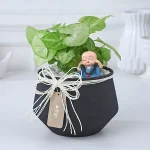Maintaining the efficacy of vaccines requires strict adherence to temperature control and storage guidelines. Cold storage boxes for vaccines are essential for ensuring that vaccines remain within the required temperature range. Regular quality checks are critical to prevent temperature excursions and ensure the reliability of these storage solutions. This article will provide a comprehensive guide on how to perform regular quality checks on cold storage box for vaccines, with a focus on integrating ultra low freezer technology into your quality assurance process.
Importance of Regular Quality Checks
Vaccines are sensitive biological products that require precise storage conditions to remain effective. Deviations in temperature, humidity, or storage conditions can compromise vaccine efficacy and patient safety. Regular quality checks help to:
- Ensure Temperature Integrity: Verify that vaccines are stored within the recommended temperature range.
- Prevent Spoilage: Identify and address any issues before they lead to vaccine spoilage.
- Maintain Compliance: Adhere to regulatory requirements and industry standards for vaccine storage.
- Enhance Patient Safety: Guarantee that vaccines administered to patients are potent and safe.
Components of Cold Storage Quality Checks
-
Temperature Monitoring
Continuous Temperature Logging: Use digital temperature loggers or data loggers to continuously monitor and record the temperature inside the cold storage box. These devices should be placed in multiple locations within the storage unit to ensure accurate readings.
Regular Calibration: Ensure that temperature monitoring devices are calibrated regularly to maintain accuracy. Calibration should be performed in accordance with the manufacturer’s guidelines and industry standards.
Temperature Alarms: Set up temperature alarms to notify staff of any deviations from the acceptable temperature range. This helps to quickly address any issues that could impact vaccine storage. -
Visual Inspections
Physical Condition Check: Inspect the cold storage box regularly for any signs of physical damage or wear. Check for issues such as cracks, dents, or loose seals that could affect performance.
Internal Cleanliness: Ensure that the interior of the cold storage box is clean and free from any contaminants or debris that could affect vaccine integrity.
Door Seals and Gaskets: Verify that door seals and gaskets are intact and functioning properly. These components are crucial for maintaining the internal temperature and preventing outside air from entering the storage box. -
Performance Testing
Door Opening Tests: Test the cold storage box’s performance by opening and closing the doors to observe how quickly the unit recovers to the set temperature. This helps to ensure that the unit can handle temperature fluctuations without affecting vaccine storage.
Power Supply Check: Regularly check the power supply to the cold storage box to ensure that it is stable and uninterrupted. Power failures can lead to temperature excursions and affect vaccine safety.
Backup Systems: Verify the functionality of backup power systems, such as generators or uninterruptible power supplies (UPS), to ensure they are operational in case of power outages. -
Documentation and Record-Keeping
Maintenance Logs: Keep detailed records of all maintenance activities, including inspections, repairs, and calibrations. This documentation is essential for tracking the performance of the cold storage box over time.
Temperature Records: Maintain accurate records of temperature readings and any alarms or deviations. This information is critical for analyzing trends and identifying potential issues before they become significant problems.
Compliance Records: Document compliance with regulatory requirements and industry standards. This includes records of quality checks, calibration, and maintenance activities.
Integrating Ultra Low Freezer Technology
Ultra low freezers (ULFs) are specialized cold storage units designed to maintain extremely low temperatures, typically between -40°C and -86°C. They are essential for storing vaccines that require ultra-low temperatures to maintain their potency. Integrating ULF technology into your quality assurance process involves:
- Temperature Control and Monitoring
Advanced Temperature Management: Ultra low freezers are equipped with advanced temperature management systems to ensure precise temperature control. Regularly check the performance of these systems to ensure they are functioning correctly.
Real-Time Monitoring: Utilize real-time monitoring systems that provide continuous temperature data and alerts. This enables quick intervention if any temperature deviations occur. - Maintenance and Calibration
Regular Servicing: Schedule regular servicing of ultra low freezers to ensure they remain in optimal working condition. This includes checking refrigerant levels, inspecting components, and performing any necessary repairs.
Calibration: Calibrate the temperature sensors and monitoring systems of the ultra low freezer according to manufacturer specifications and industry standards. - Backup Systems and Alarms
Power Backup: Ensure that ultra low freezers are connected to reliable backup power systems, such as generators or UPS, to prevent temperature excursions during power outages.
Alarm Systems: Set up alarm systems to alert staff of any deviations in temperature or other critical parameters. Regularly test and maintain these alarm systems to ensure their reliability. - Staff Training
Operational Training: Train staff on the proper operation and maintenance of ultra low freezers, including how to respond to alarms and manage temperature deviations.
Emergency Procedures: Develop and communicate emergency procedures for handling temperature excursions, equipment failures, and power outages. Ensure that all staff are familiar with these procedures.
Best Practices for Quality Checks
- Establish a Routine Schedule: Develop a routine schedule for performing quality checks on cold storage boxes and ultra low freezers. Regular checks should be performed daily, weekly, and monthly, depending on the specific needs and usage of the equipment.
- Follow Manufacturer Guidelines: Adhere to the manufacturer’s guidelines and recommendations for maintenance, calibration, and operation of cold storage boxes and ultra low freezers.
- Conduct Regular Audits: Perform regular audits of your quality assurance processes to ensure compliance with regulatory requirements and industry standards. This helps to identify areas for improvement and ensure ongoing effectiveness.
- Invest in Technology: Invest in advanced monitoring and management technology to enhance the accuracy and efficiency of quality checks. This includes digital temperature loggers, real-time monitoring systems, and automated alarm systems.
- Engage with Experts: Consult with experts in cold storage and vaccine management to stay informed about best practices and emerging technologies. This helps to ensure that your quality assurance processes are up-to-date and effective.
Conclusion
Regular quality checks on cold storage boxes and ultra low freezers are essential for maintaining the efficacy and safety of vaccines. By implementing comprehensive quality assurance practices, including temperature monitoring, visual inspections, performance testing, and documentation, healthcare organizations can effectively manage the storage of vaccines and prevent potential issues.
Integrating ultra low freezer technology into your quality assurance process enhances your ability to store vaccines at extremely low temperatures, ensuring their potency and effectiveness. By following best practices and staying informed about industry standards, healthcare organizations can navigate the challenges of vaccine storage and contribute to better patient outcomes.
















